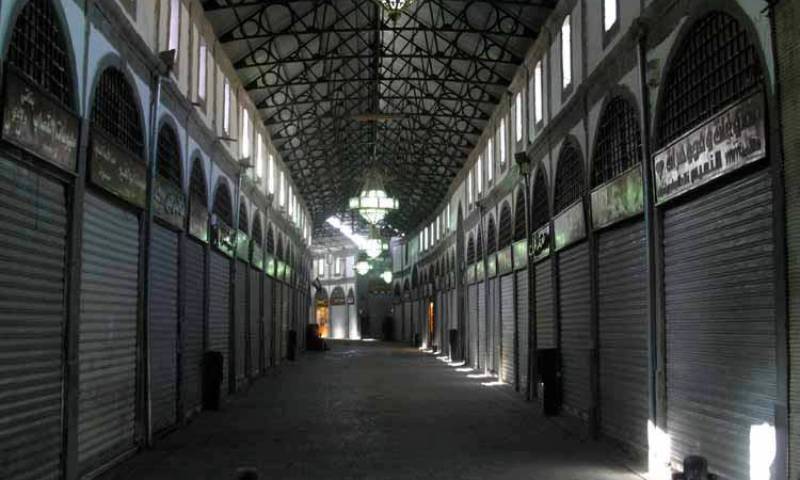Homs governorate has notified shop owners that it would forcibly reopen their properties if they did not return to work in them. This has been the governorate’s way to revive the old markets in Homs once they are completely restored.
The governorate has given merchants and neighborhood committees two months to resume their commercial activity and reopen shops after their rehabilitation, or the governorate will reopen them, the local pro-government newspaper al-Watan cited a source from the Homs Chamber of Commerce on 24 January.
Old markets’ physical condition and merchants’ demands
Homs markets’ commercial activity can recover significantly, especially after finishing more than 70 percent of the market restoration campaign launched by the governorate four years ago. According to al-Watan, the campaign was conducted in collaboration with the United Nations Development Program (UNDP), Homs Chamber of Commerce, government service institutions and companies, and the local community.
It added that for their part, the shop owners have been demanding financial support to return to their stores, as their business was affected over the past period. They need financial incentives to boost their capital.
Some shop owners suggested that the regime’s government should exempt them from taxes and duties, provide basic services such as power supply, water, and telecommunications, and move the transportation node to the city center to revive the commercial activity in the markets.
They called for protecting the identity and specialties of old markets, particularly after some craftsmen have moved to newer markets, which today have all sorts of professions and do not need further support.
Revitalization attempts
After the regime forces regained control of the old neighborhoods of Homs in mid-2014, the government began its restoration campaign in the city, starting with the covered markets, funded by the United Nations (UN).
In 2016, in coordination with Homs governorate, the UN launched a restoration and reconstruction plan, which was not in line with merchants’ expectations, nor was it capable of attracting them to resume their work.
The restoration of the old markets began after the head of the Syrian regime, Bashar al-Assad, issued a decision to reopen government buildings in central Homs city, including the telecommunication service building, the post office building, and the Central and Commercial Banks’ branches in Homs.
The decision was followed by statements from the former governor of Homs, Talal al-Barazi, to local media outlets that the restoration move came to stimulate the city center’s economic activity. The government has removed 300,000 tons of rubble in preparation for street rehabilitation, in cooperation with the UN and international organizations under special contracts that provided for the restoration of the region to preserve the traditional identity of these markets and protect the owners’ property rights.
The UN supported the old markets’ restoration project in Homs, which was divided into four phases, each of which extends over a period of six months. The restoration work was preceded by the removal of rubble and the surveying and mapping of markets. The project aimed at the restoration of normalcy to the affected markets and restarting the economy.
According to the Directorate of Antiquities and Museums in Homs, the number of shops of covered markets before 2011 was 890 distributed in 13 souks: al-Nouri, al-Hisbeh, Bazar Bashi, al-Mansoojat, al-Sagha, al-Qaysarieh, al-A’tareen, al-Arab, al-Faru, al-Nahhaseen, al-Khayyateen, al-Najjareen and al-Naoura.

